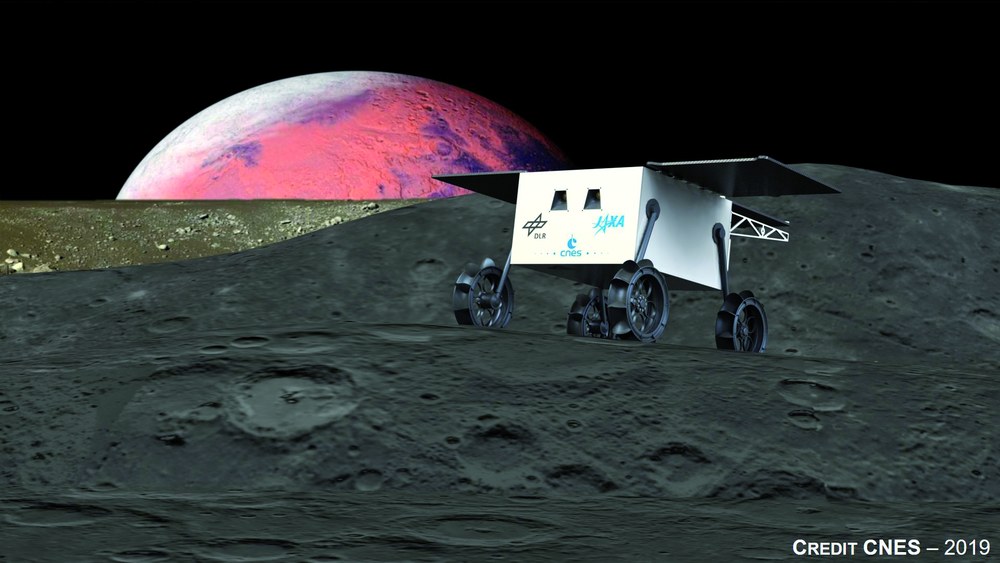MMX
To be launched in September 2024 and inserted into Martian orbit in 2025, the Martian Moons eXploration mission (MMX) is a JAXA mission to Phobos and Deimos investigating the origin of the two Martian moons. While surface spectra indicate an origin from captured asteroids, the moons’ orbits favour formation scenarios involving the ejecta from a major impact early in Martian history. MMX will characterise the surfaces and subsurfaces of Phobos and Deimos in great detail using the MMX orbiter and lander with samples to be returned from Phobos in 2029. For in situ investigations the Centre National d’Etudes Spatiales (CNES) and the German Aerospace Centre (DLR) contribute a small rover, named Idefix, utilising a six-channel radiometer (miniRAD), a Raman spectrometer (RAX), stereo navigation cameras (NavCam), as well as two cameras imaging the wheel-surface interactions (WheelCam). The solar powered MMX rover will be delivered to the surface of Phobos from an altitude of less than 100 metres and will operate for three months (Michel et al., 2022). It will traverse several metres to hundreds of metres collecting data from multiple sites. The Rover delivery and operations are planned for 2026-2027.
The MMX rover will primarily address questions of regolith dynamics, mechanical properties, surface strength, cohesion, grain size distribution, and porosity in a low gravity environment and characterise Phobos’ surface processes. It will perform close-up and high resolution imaging of the terrain, will measure the regolith’s mineralogical composition and determine surface temperature, emissivity, and thermal conductivity, respectively. Rover scientific objectives will thus complement those of the main spacecraft and in-situ data will serve as ground truth for the orbiter instruments. The rover data will provide context for returned samples. The DLR Institute of Planetary Research is involved in all aspects of mission data analysis, including preparatory studies on, e.g. regolith properties (Biele et al., 2022) and laboratory work in preparation of mission data analysis (Terliesner et al., 2022).
The collaboration between DLR and CNES will be further strengthened when an aliquot of the total mass of the samples collected by the MMX mission will be transferred to Europe. ESA will be coordinating a joint curation effort between the national agencies of Germany and France.
In preparation for this major effort, the DLR Institute of Planetary Research is working on the setup of a new analytical and curation facility in Berlin, between the German Aerospace Centre (DLR) and the Museum für Naturkunde (MfN). Within the analytical facility it will be possible to carry out the basic characterisation of the samples in controlled environmental conditions as preparation for more specialised facilities for more in depth examination. The curatorial expertise is being developed on the existing expertise from the Meteorite Collection based at the MfN and in collaboration with the JAXA curation facilities. Current curators, together with the younger generation are being trained and working on skillset exchange.
Hardware Participation of the DLR Institute of Planetary Research
- miniRAD (Radiometer)
PI: Matthias Grott
Scientific Participation of the DLR Institute of Planetary Research
- miniRAD (Radiometer)
- MMX Rover
Further DLR Participation
- Institut für Optische Sensorsysteme
- Institut für Raumfahrtsysteme
- Institut für Systemdynamik und Regelungstechnik
- Institut für Systemleichtbau
- Raumflugbetrieb und Astronautentraining

